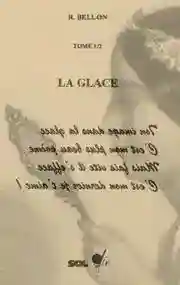Mazanderani love poem
آینهء
ته عکس آینهء دِلِه
مِه قشنگترین شِر هسّه
سَی کِن دَ از بِین شوونه
وِ آخِرین بارِ که گِمه تِرِه دوس دارمِه

Transliteration
Aanh'
Th 'ekes aanh' dِlِh
Mِh qshngutran shِr hsh
Sَa keِn dَ az bِan shwwnh
W akhِran barِ keh guِmh tِrِh dws darmِh

→ French poem ←
Her and the Mazanderani language
This Mazandarani version of my love poem is in HER language! She is ONE, among 3 million speakers, in Mazandaran! This is where SHE lives!
The Mazandarani is an Iranian language, which including its dialects, is called: Tabarian, Gilaki, Mazanderani, Velatru, Gorgani, Sari, Tabri, autonym : (طبری, مازرونی) = (Tabari, Mazuroni); it belongs to the northwest branch of Iranian languages.
This language, close to Gilaki, is spoken in the province of Mazandaran (Mazanderan, formerly Tabaristan), in the north of Iran, from the center-south to the southern-eastern coasts of the Caspian Sea, a region which outside of a humid and forested coastal strip, is strewn with mountains. The first written reference that we have dates from the first Muslim geographical works.
Mazandarani, related to West Persian, has not been influenced by Turkish and Arabic as much as it has been for Gilaki, Farsi and Turkmen, the other languages of the region. This is an important difference, since there is no mutual intelligibility with them.
Unlike other languages, Mazanderani is a language with a written tradition as old as that of Persian.
The first works we know date from the 10th and 11th centuries. These are generally poetic works, in verse. The following centuries will see the birth of a whole literature made up of stories or poetry.
In the 17th-18th century, Amir Pazvari became an extremely popular poet. People declaim and sing his works, the amiris, which are poems, throughout the region.
Taleb d'Amol, also a poet, is no less famous, and his poems, tdleb taleba, are also a genre that people admire.
There are many dialect variations, respectively stretching from north to south and east to west, each with numerous sub-dialects, almost than the number of villages.
Between the west of the linguistic area of Mazanderani, and the east of the linguistic area of Gilaki, we find a whole area where languages are a bit of the both languages, and could be considered as separate, since they are unintelligible with mazanderani and gelaki.
If the population is still scattered in villages along the Caspian, with the transition to modernity, there have been many movements of populations towards the urban areas, making them even denser.
This obviously has consequences for the language, in these large cities, in reducing its use in favor of Farsi, first through bilingualism, then by abandoning it ... and when it is not abandoned, Mazandarani tends to take another form, which might suggest that it is a dialect of Persian.
If since the 1960s, there are still publications of all kinds of books, especially poetry, and that different media have broadcasts in the language, the Mazandaranis do not have the same attachment to their literary language as some of their neighbors ... Already many traditions and customs have been lost.